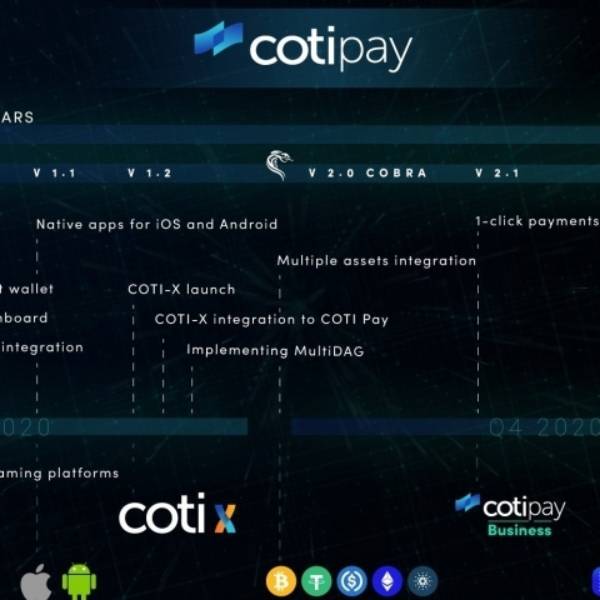Introduction
The concept of mainnet wallets has been gaining popularity in the cryptocurrency space. Mainnet wallets are essential for interacting with the mainnet of a blockchain network. In this article, we will explore the ins and outs of mainnet wallets, including their importance, features, and how to choose the right one for your needs.

What is a Mainnet Wallet?
Mainnet wallets offer users the advantage of participating in real transactions on the blockchain network, ensuring that their cryptocurrency holdings are secure and accessible for everyday use. Additionally, mainnet wallets provide a seamless and efficient platform for sending and receiving cryptocurrencies, allowing users to easily manage their digital assets without the need for third-party intermediaries. With the ability to store a wide range of cryptocurrencies on the mainnet, users can diversify their digital holdings and take advantage of various investment opportunities within the blockchain ecosystem.
Security is a top priority when it comes to mainnet wallets, as users require peace of mind knowing that their digital assets are protected from potential threats or vulnerabilities. Mainnet wallets use advanced encryption and authentication methods to safeguard users’ private keys and ensure the integrity of their transactions on the blockchain network. By prioritizing security and usability, mainnet wallets offer users a reliable and convenient solution for managing their cryptocurrency holdings with confidence and peace of mind.
Features of Mainnet Wallets
Mainnet wallets are equipped with various features to make user experience seamless and protect their assets. These features include multi-currency support, two-factor authentication, biometric login, and cold storage for added security, ensuring that users can access and manage their digital assets with ease and peace of mind. Furthermore, some mainnet wallets also provide staking and yield-generating capabilities for certain cryptocurrencies, allowing users to maximize the potential returns on their investments while securely storing their funds.
The diverse range of features offered by mainnet wallets enhances user convenience and security, allowing users to navigate the complex world of cryptocurrency with confidence. With multi-currency support, two-factor authentication, and biometric login, users can effortlessly manage and access their assets while safeguarding them against unauthorized access. The added benefit of staking and yield-generating capabilities further empowers users to grow their investment portfolios while keeping their funds secure in cold storage, making mainnet wallets a comprehensive solution for cryptocurrency management.

Types of Mainnet Wallets
When it comes to mainnet wallets, users have a variety of options to choose from. Hardware wallets, known for their robust security features, are a popular choice among those prioritizing safety. On the other hand, mobile wallets are highly sought after for their accessibility and convenience, making them an ideal choice for users who are constantly on the move. However, it’s important to weigh the advantages and disadvantages of each type of wallet before making a decision.
Pros and Cons of Mainnet Wallets
While hardware wallets offer top-notch security, they may be less user-friendly for some individuals. On the other hand, mobile wallets provide easy accessibility, but may not offer the same level of security as hardware wallets. Ultimately, the decision of which mainnet wallet to use depends on the user’s individual needs and priorities. It’s important for users to carefully consider the advantages and disadvantages of each type of wallet before selecting the one that best suits their requirements.
How to Choose a Mainnet Wallet
When choosing a mainnet wallet, it’s crucial to carefully consider several factors. Security is paramount, so be sure to choose a wallet with robust security features. Additionally, the user interface should be intuitive and user-friendly to ensure a seamless experience. It’s also important to check which cryptocurrencies are supported by the wallet, as well as any additional features that may be beneficial. Another crucial step is to research the reputation of the wallet provider and read reviews from other users to gauge the overall user experience. By taking these factors into account, you can select a mainnet wallet that aligns with your specific needs and preferences.
The Importance of User Experience in Choosing a Mainnet Wallet
When choosing a mainnet wallet, one of the most important factors to consider is the overall user experience. This includes the ease of use of the wallet and the level of support provided by the provider. Research the reputation of the wallet provider and read reviews from other users to gauge the overall user experience. By doing so, you can ensure that the wallet you choose aligns with your specific needs and preferences. It’s crucial to select a mainnet wallet that not only offers strong security and support for a range of cryptocurrencies but also provides a seamless and user-friendly experience.
Setting Up a Mainnet Wallet
When setting up a mainnet wallet, the first step is to download the wallet application from a trusted source. Once the application is downloaded, the next task is to create a new wallet, which involves generating a new set of private and public keys. After the wallet has been created, it is crucial to follow the best practices for securing the wallet, such as enabling two-factor authentication to add an extra layer of security. Additionally, using a strong password and keeping backups of the wallet’s recovery seed are essential for ensuring the safety of the wallet and its contents. By following these steps, users can significantly reduce the risk of unauthorized access and potential loss of funds.

Securing Your Mainnet Wallet
Securing a mainnet wallet involves taking several precautionary measures to safeguard the funds stored within. Enabling two-factor authentication can help protect against unauthorized access, as it requires an additional verification step beyond the password. Furthermore, using a strong and unique password adds another layer of security to the wallet, making it more difficult for hackers to gain access. In addition, keeping backups of the wallet’s recovery seed is crucial, as it allows users to restore access to their funds in case the wallet is lost or compromised. By following these best practices for securing a mainnet wallet, users can have peace of mind knowing that their funds are well-protected.
Conclusion
Mainnet wallets are essential for securely storing and transacting with digital assets on the blockchain. They provide users with a user-friendly interface and a secure way to manage their cryptocurrencies. Understanding the features and types of mainnet wallets is crucial for making informed decisions about which wallet best suits individual needs. As the cryptocurrency space continues to evolve, mainnet wallets are expected to remain a key tool for crypto enthusiasts and investors alike.
When choosing a mainnet wallet, users should consider factors such as security, user interface, and compatibility with different cryptocurrencies. It is important to choose a wallet that offers robust security features to protect digital assets from theft or hacking. Additionally, a user-friendly interface is key for easy navigation and transaction management. Compatibility with a wide range of cryptocurrencies is also important to ensure flexibility and convenience for users. By considering these factors, users can choose a mainnet wallet that meets their specific needs and preferences.

